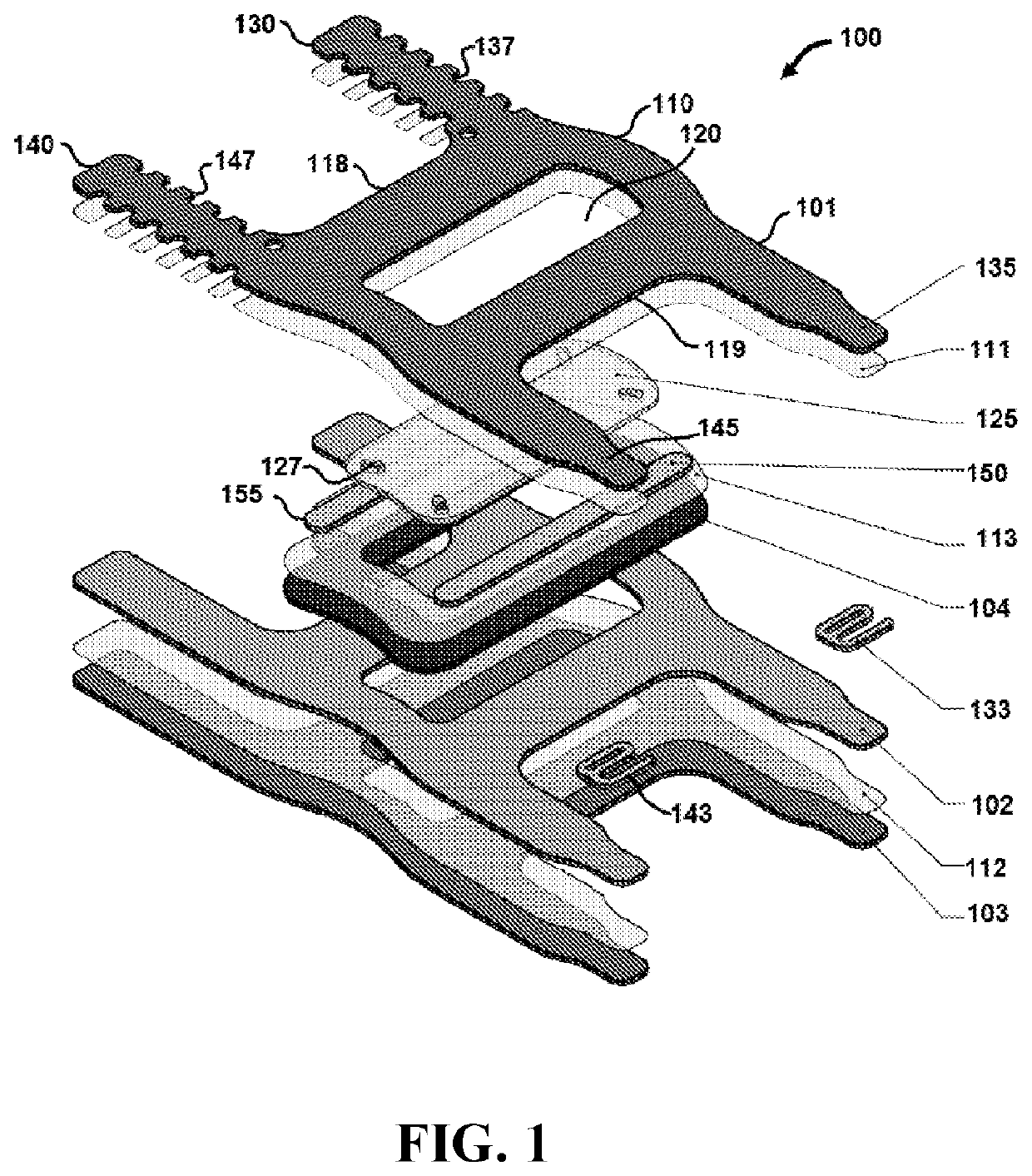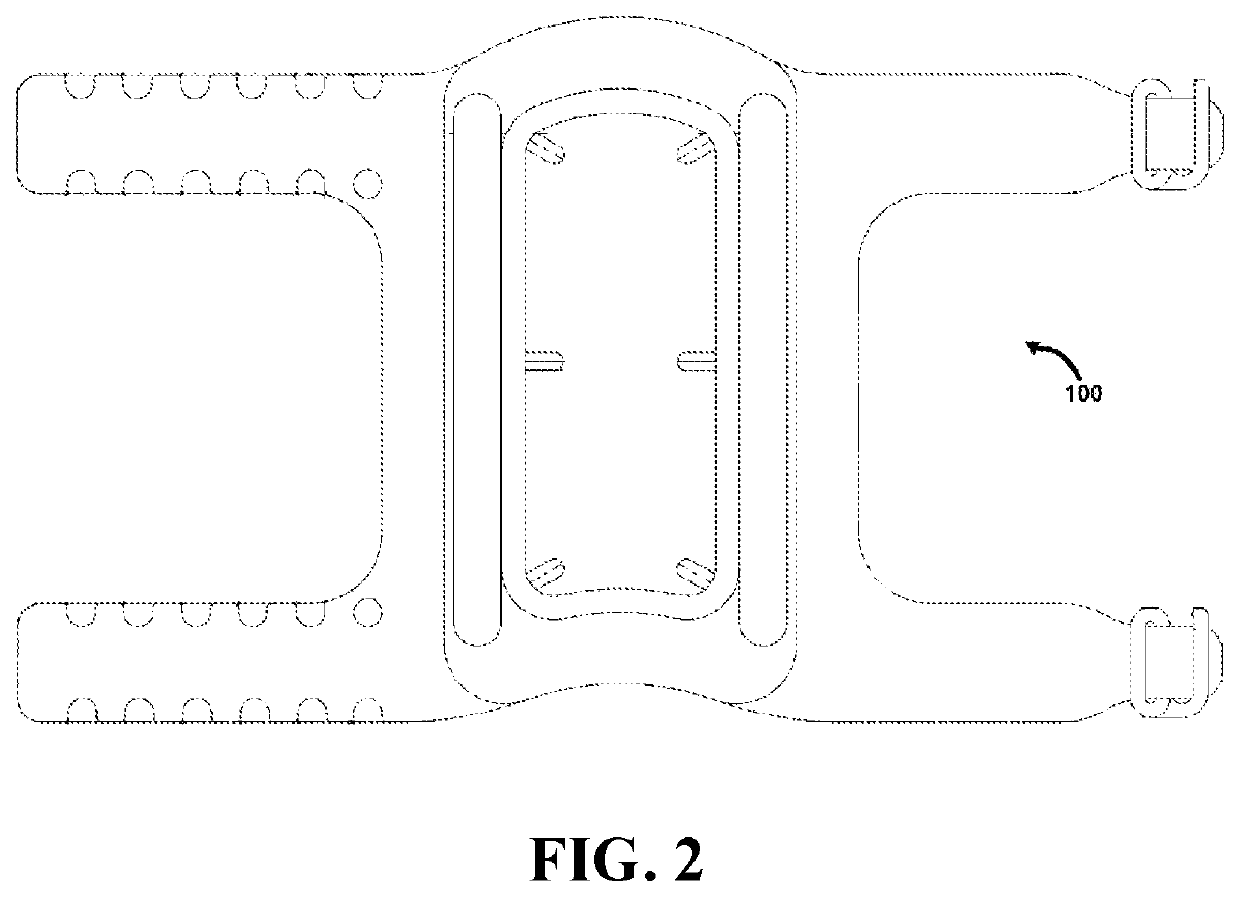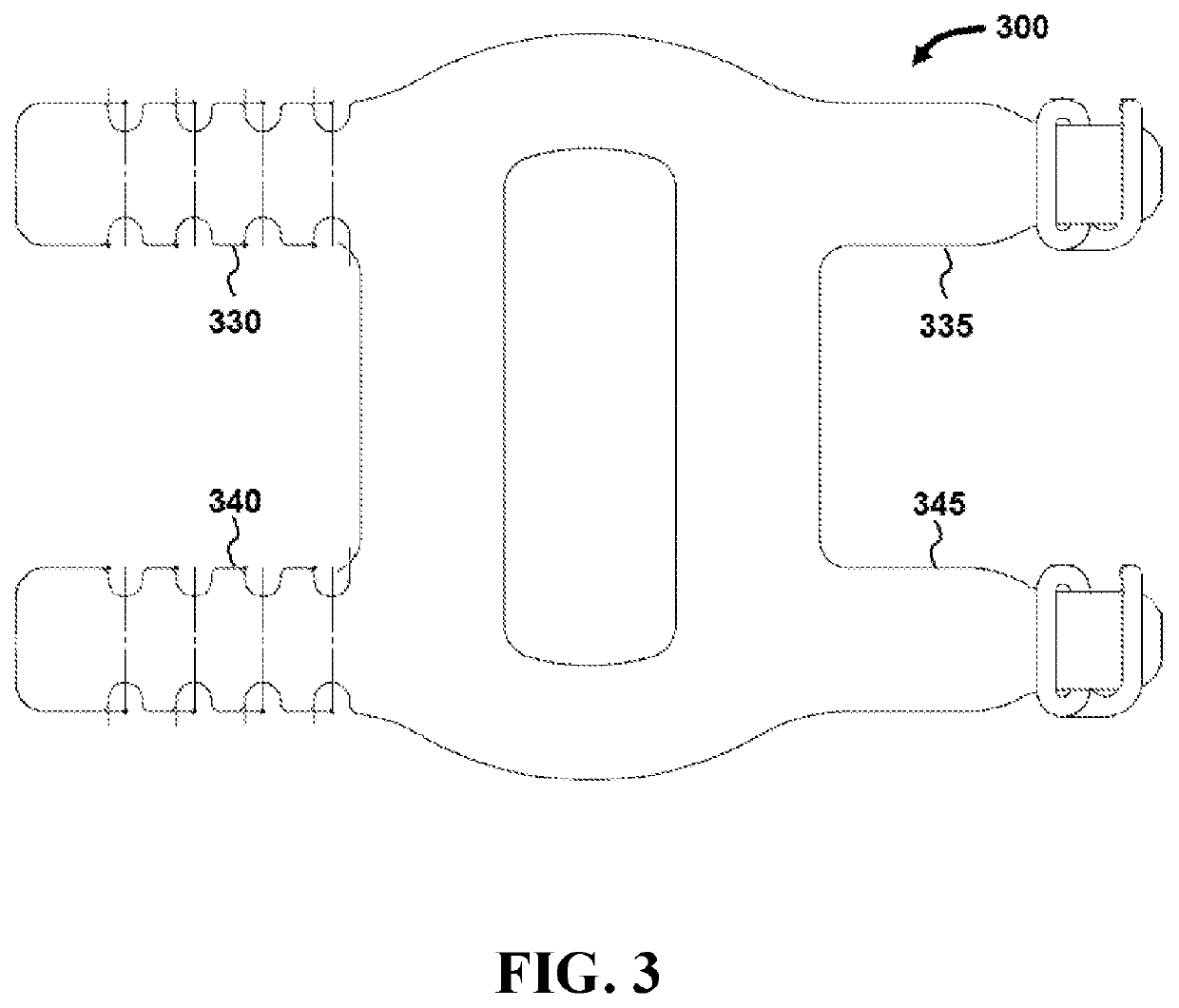Systems and methods for intravenous catheter stabilization and monitoring
a technology of intravenous catheters and monitoring devices, applied in the field of systems and methods for intravenous catheter stabilization and monitoring, can solve the problems of increased risk of infiltration, multiple challenges for successful implementation, and increased risk of catheter intentional and/or unintentional dislocation, so as to minimize the disruption to the patient
- Summary
- Abstract
- Description
- Claims
- Application Information
AI Technical Summary
Benefits of technology
Problems solved by technology
Method used
Image
Examples
Embodiment Construction
[0030]Referring now to FIG. 1, exploded perspective and top views are shown of a device 100 for securing and monitoring an intravenous catheter. While particular features and components are shown and described in the exemplary embodiment shown in FIG. 1, it is understood that other exemplary embodiments of the present invention may comprise different features and components.
[0031]In this exemplary embodiment, device 100 comprises a central portion 110 comprising an aperture 120, with a transparent panel 125 extending across aperture 120. Device 100 also comprises a first support member 150 and a second support member 155 coupled to central portion 110 and proximal to aperture 120. Device 100 further comprises a first elongated portion 130 extending from a first side 118 of central portion 110, and a second elongated portion 135 extending from a second side 119 of central portion 110. In addition, device 100 also comprises a third elongated portion 140 extending from first side 118 a...
PUM
 Login to View More
Login to View More Abstract
Description
Claims
Application Information
 Login to View More
Login to View More - R&D
- Intellectual Property
- Life Sciences
- Materials
- Tech Scout
- Unparalleled Data Quality
- Higher Quality Content
- 60% Fewer Hallucinations
Browse by: Latest US Patents, China's latest patents, Technical Efficacy Thesaurus, Application Domain, Technology Topic, Popular Technical Reports.
© 2025 PatSnap. All rights reserved.Legal|Privacy policy|Modern Slavery Act Transparency Statement|Sitemap|About US| Contact US: help@patsnap.com



